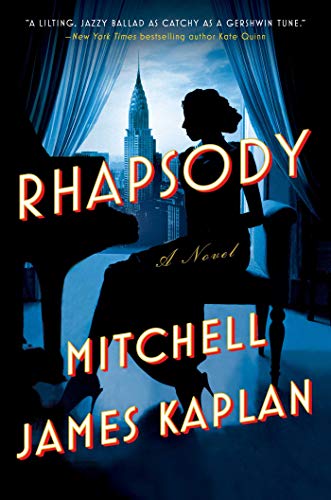Rhapsody
On a fateful evening in 1924, Kay Warburg reluctantly attends a concert to hear a piano concerto composed and played by songwriter George Gershwin. Kay’s perfect pitch, impressive memory, and classical education have made her a music snob. All she knows of Gershwin is that he writes popular music, which she finds “predictable and trite, boring really.” She scoffs at his concerto’s title, “Rhapsody in Blue,” which doesn’t hide the liberties he’s taken with the structure of a classical concerto. Even his posture and fingering offend her purist sensibilities. But when she closes her eyes, stops thinking, and truly listens to the music, its sadness and beauty shake her to the core.
With meticulous attention to historical details, Kaplan plunges readers into the world of early 20th-century New York through Kay’s eyes and especially her ears. A musician of her caliber would indeed hear the bustling city as “hundreds, thousands, millions of individual trajectories: melodic lines. Harmony. Dissonance. Counterpoint. Zigzag rhythms against the unheard ticking of the universal metronome.”
Kay has risen from poverty to marry wealthy banker Jimmy Warburg. Surrounded by the elite of New York society, she tires of the superficiality and the witty banter they wield against friends and foes alike. She can play their social games, but she isn’t satisfied until she meets the charismatic Gershwin and becomes his musical and romantic partner.
A dizzying array of real-life celebrities appear in cameos (Fred Astaire, Harpo Marx, and Maurice Ravel are just a few). Unfortunately, the last third of the novel loses momentum and its focus on Kay’s internal world, becoming a series of vignettes of her encounters with these celebrities. Recommended for music lovers and readers who like a wide-angle view of the era.










